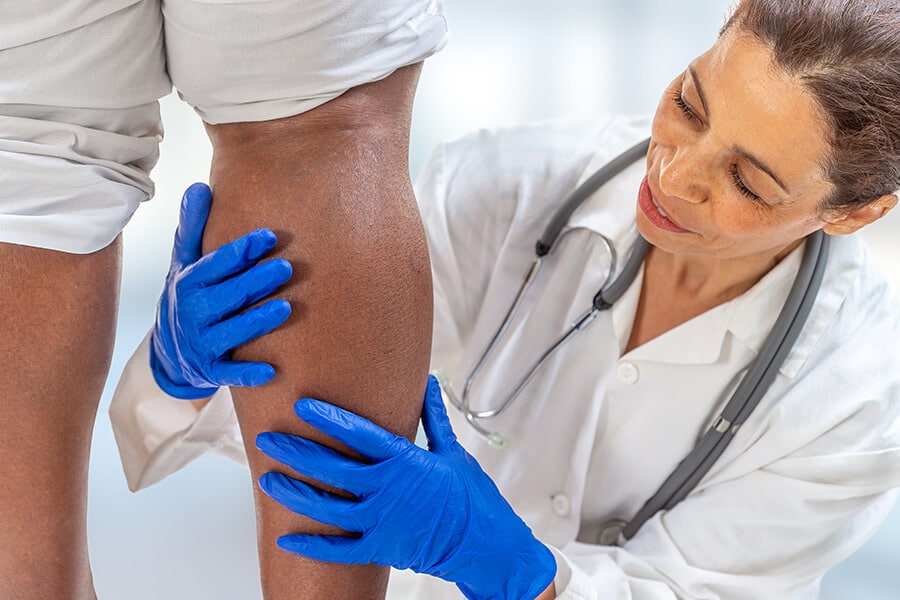What is vein ablation for varicose veins?
Varicose veins are veins that have become enlarged and can become discolored. Sometimes they cause visible vein lines or spider veins on the legs and feet. Other times they are invisible to the eye. Often, varicose veins are merely a cosmetic issue, but in some cases they cause aches or discomfort ranging from mild to severe. At times varicose veins can point to more serious issues, including deep vein thrombosis (or blood clots in the veins). Vein ablation is a common procedure used to treat varicose veins.
Common symptoms of varicose veins can include heaviness, burning, aching, tiredness, or pain in your legs (symptoms may be worse after you stand or sit for long periods of time). You may also experience swelling in your feet and ankles or itching over the vein.

More serious symptoms include leg swelling or calf pain after you sit or stand for long periods of time. Some patients experience skin changes, which could include color changes or dry, thinned skin. Sometimes there is inflammation, scaling, open sores, or you may bleed after a minor injury.
When varicose veins are diagnosed, vein ablation is a common choice because it is a minimally-invasive outpatient procedure.
Here are a few things you need to know about vein ablation:
Vein ablation can be used to treat varicose veins.
Varicose and spider veins are cauterized to close the vein in this procedure, which reroutes blood flow to other, larger veins. To do this, we use a numbing cream or anesthetic that is applied to the area we are treating. Our specialist inserts a catheter through a small incision, into the vein. The specialist uses an ultrasound device to observe the vein and create a map of its flow. An electrode is then used to heat the vein, which closes it through the cauterization process. The catheter is removed and the process of rerouting begins. Multiple veins can be treated during a single session if needed.
Your doctor can help you decide if you are a candidate for vein ablation.
Our providers work with our patients who are symptoms from their varicose veins to determine recommended the best course of action. If you have symptoms from varicose veins, vein ablation may be an option for you. If it is not, we offer other treatment options and will work with you to find the best solution.
Vein ablation is minimally invasive.
Vein ablation only takes about one hour to complete and typically causes little pain for most patients. The size and location of your varicose veins can affect your level of discomfort. You will feel a small amount of pressure as a catheter is inserted.
Most patients experience improvement in their symptoms after a vein ablation.
The vast majority of patients who undergo vein ablation report that their symptoms improve. This rate of success is another reason why vein ablation is often recommended, and why we provide it here at Preferred.
Patients are usually able to return to normal activities quickly.
After the procedure is complete, you can typically resume the normal activities of life and work immediately. Sometimes, you’ll need to wear a compression stocking. The only restrictions are air travel and remaining seated for long periods of time, and these restrictions are not in place for very long.
Our team is dedicated to helping women with varicose veins get all of the information they need to make their own decisions about treatment. If vein ablation is appropriate, we are ready to support you every step of the way through the process, and we offer other options when it is not.
If you are experiencing the symptoms of varicose veins, spider veins, or another venous issue, reach out to us today to schedule an appointment.
